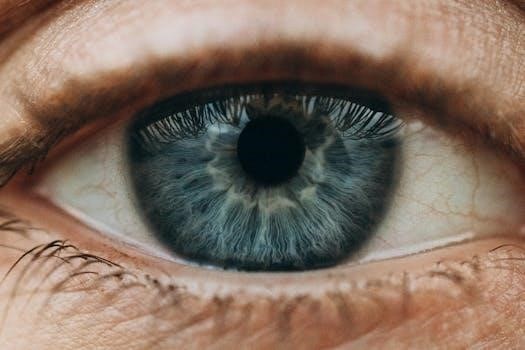Visual Mnemonics in Medical Education
Medical education demands the memorization of vast amounts of complex information. Visual mnemonics, utilizing images and visual aids, are a powerful tool to enhance memory. These tools help medical students, doctors, and nurses learn more effectively and boost retention, creating a more engaging and enriching learning experience.

The Power of Visual Mnemonics
Visual mnemonics harness the brain’s natural inclination to remember images more effectively than text. In medical education, where intricate anatomical structures, physiological processes, and pharmacological details can be challenging to memorize, visual aids provide a significant advantage. These mnemonic techniques transform abstract concepts into memorable visual representations, making learning more engaging and intuitive. The effectiveness of visual mnemonics stems from their ability to create associations and connections within the brain, allowing for faster recall and comprehension. Furthermore, visual learning caters to a wider range of learning styles, accommodating visual, auditory, and kinesthetic learners, thus enriching the overall educational experience. The use of graphics, illustrations, and animations can simplify complex topics into bite-sized pieces, improving knowledge retention and making the learning process more enjoyable. By incorporating elements of humor and storytelling, visual mnemonics can further enhance memory and engagement, ultimately empowering medical professionals to master their craft.
Benefits of Visual Mnemonics for Medical Students
Visual mnemonics offer numerous advantages for medical students navigating the complexities of their curriculum. They drastically improve memory retention, making it easier to recall intricate details about medical conditions, treatments, and anatomical structures. By transforming complex information into visual stories, these mnemonics simplify the learning process and enhance comprehension. Visual aids facilitate active recall, a crucial aspect of effective studying, by allowing students to visualize concepts instead of just rote memorization. This approach not only promotes long-term retention but also makes the learning process more interactive and engaging. Furthermore, visual mnemonics are adaptable to diverse learning styles, catering to students who are visual, auditory, or kinesthetic learners. They are especially useful in preparing for exams like the USMLE, OSCEs, and MRCP PACES by helping students quickly recall essential information. Finally, using visual aids reduces the stress associated with learning vast amounts of medical data, fostering a more positive learning experience and boosting student confidence.
Picmonic⁚ A Comprehensive Visual Mnemonic Resource
Picmonic stands out as a leading platform for visual mnemonics in medical education, offering a vast library of graphic representations covering a wide array of healthcare fields. Since its inception in 2011, Picmonic has been instrumental in transforming complex medical information into memorable visual stories. This approach enhances learning by combining engaging characters, unforgettable narratives, interactive videos, and built-in quizzes. Picmonic’s research-proven system is designed to boost retention and make studying more effective and enjoyable. It is a valuable resource for medical students preparing for exams such as the USMLE, COMLEX, and NCLEX. The platform’s comprehensive nature means students can find visual aids for various subjects, making it a one-stop solution for their mnemonic needs. Moreover, Picmonic’s commitment to innovation ensures that the platform remains a relevant and powerful tool for modern medical education, helping students grasp complex concepts with ease and confidence by using a visual lexicon that is easy to remember and recall;
Creating Your Own Visual Mnemonics
Developing personalized visual mnemonics is a powerful way to tailor learning to individual needs and enhance memory retention. The process involves translating abstract medical concepts into visual representations that are meaningful to the creator. This method helps in making connections between ideas, transforming complex topics into more digestible and memorable chunks. Creating your own mnemonics is akin to learning a new language; initially, it may seem challenging, but with practice, the ability to generate relevant images and concepts improves significantly. Personalized visual aids can be designed to suit specific learning styles, whether visual, auditory, or kinesthetic, further enriching the learning experience. By building a visual lexicon of commonly used images and themes, one can streamline the creation process and make it more efficient. The practice of creating visual mnemonics is not just about memorization; it’s about understanding and connecting information in a way that is personally relevant and impactful. This active engagement in the learning process can significantly boost recall and comprehension, making it an invaluable skill for medical students and professionals alike.

Free Online Resources for Visual Mnemonics
Numerous free online resources cater to medical students and professionals looking to utilize visual mnemonics. These platforms often offer a wealth of pre-made mnemonics, covering a wide range of medical topics. Online forums and communities dedicated to medical education are excellent sources for shared mnemonics and tips on creating your own. Websites like MedEd University provide free educational resources, including visual learning aids, podcasts, and platforms for collaborative learning. Furthermore, platforms such as Geeky Medics offer curated lists of mnemonics, aiding in memorizing crucial medical concepts, surgical procedures, and clinical skills. These free resources are crucial for students who want to enhance their studies without incurring additional costs. By exploring these online communities, students can tap into a collective knowledge base and discover a variety of visual mnemonics tailored to different learning styles. The availability of these free resources is invaluable, providing accessibility and support for anyone seeking to improve their medical learning through the power of visual aids. These resources are constantly updated and expanded by the medical education community.
MedicoVisual⁚ Immersive 3D Visual Learning

MedicoVisual provides a unique approach to medical education by harnessing the power of 3D visual learning. This platform offers immersive lectures that utilize computer-generated 2D and 3D graphics to visualize intricate medical concepts. MedicoVisual focuses on building a strong foundation by taking students from the basics to the more complex aspects of topics, much like constructing a multi-story building. They offer 3D visual lecture series on various medical fields like cardiovascular, head and neck, respiratory, and urogenital. These engaging visual lectures include witty humor, making the learning experience more enjoyable. The use of 3D animations and comical mnemonics helps improve retention of difficult subjects. MedicoVisual is designed for doctors, medical students, paramedics, dental professionals, and anyone interested in medical topics, offering a very concise approach to learning. By using immersive 3D technology, MedicoVisual provides a learning experience that is both effective and captivating, making complex anatomical and physiological mechanisms easier to understand. It is the future of medicine learning.

Visual Mnemonics for USMLE and Board Exams
Visual mnemonics are an invaluable tool for students preparing for challenging medical board exams such as the USMLE, ABIM, and others. These exams require a vast understanding of diverse medical concepts, and visual mnemonics provide a powerful method to retain and recall this information. Many platforms offer collections of visual mnemonics specifically designed to aid in board exam preparation. These resources often include mnemonics for key medical, surgical, and clinical skills concepts. They also incorporate images to help students better understand and memorize complex topics. The use of visual mnemonics helps students to condense vast amounts of information into easily digestible chunks. Additionally, they facilitate active recall which is essential for success in these exams. Furthermore, these mnemonics help to make studying more engaging, transforming what can be a monotonous task into a more enjoyable process, which is particularly useful during long hours of preparation. Visual mnemonics are a highly effective strategy to enhance the chances of success in medical board exams by improving memory and understanding.
Visual Mnemonics and Different Learning Styles
Visual mnemonics are particularly beneficial because they cater to a variety of learning styles, including visual, auditory, and kinesthetic learners. For visual learners, the use of images and diagrams directly appeals to their preference for visual input, making it easier for them to process and remember information. Auditory learners can benefit from mnemonics that include sounds, rhythms, or verbal associations, reinforcing learning through auditory cues. Even kinesthetic learners, who learn best through movement and hands-on activities, can benefit from visual mnemonics by creating their own versions or using physical props associated with the mnemonics. This adaptability makes visual mnemonics a versatile tool for any student. By tailoring the mnemonics to their specific learning preferences, students can enhance their educational experience and improve information retention. The integration of various sensory inputs makes learning more engaging and effective, ensuring that students of all learning styles can fully grasp complex medical concepts. Therefore, visual mnemonics are not only a powerful memory aid but also a flexible resource to enhance the learning process for every student.
Visual Mnemonics in Medical Textbooks and Guides
The incorporation of visual mnemonics in medical textbooks and study guides has become increasingly popular due to their effectiveness in enhancing learning. These resources often integrate images, diagrams, and other visual aids alongside traditional text to help students better understand and retain complex medical concepts. Medical textbooks and guides that utilize visual mnemonics can transform abstract information into more memorable and relatable visual stories. By presenting information in a visually engaging format, students are able to make stronger connections and recall facts more easily. These mnemonics are not just limited to simple pictures; they often include interactive elements, comical characters, and other creative representations that are designed to make the learning process more interesting and enjoyable. The use of visual mnemonics in medical textbooks and guides is a testament to the importance of multimodal learning, which combines visual, auditory, and kinesthetic elements to enhance comprehension and retention. These resources often provide a comprehensive collection of mnemonics, allowing students to access and learn from a variety of different visual techniques. By integrating mnemonics into textbooks, medical students have an additional tool to boost their learning and prepare for exams.
